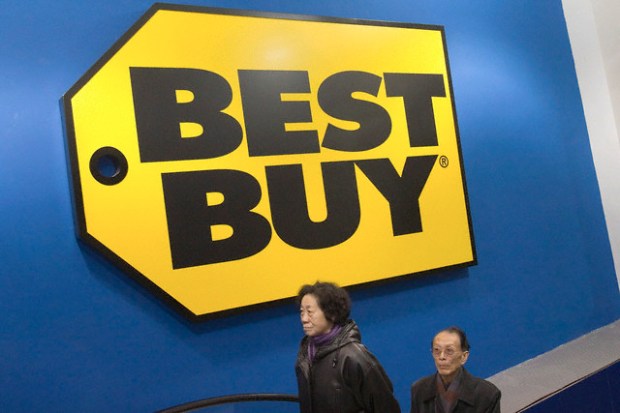Best Buy CEO Wants To Use Stores As Fulfillment Centers

Large retailers with many stores typically have merchandise and order-fulfillment dilemmas. While they typically have fulfillment centers to accommodate online purchases, often they have the same products sitting unsold on shelves on storefront floors or “in back.”
To make the best use of their inventories, such merchants increasingly are moving to “ship-from-store” initiatives, where the unsold stock within stores can accommodate faster shopping to nearby locations while also reducing product-inventory costs. Walmart, for example, during this year’s second quarter enabled 20 additional stores to fulfill online orders, and 20 percent of units ordered on walmart.com are now shipped from stores, Neil Ashe, Walmart’s president and CEO of global eCommerce, told analysts during a recent call to discuss the quarter’s earnings.
Other companies, such as Best Buy, are moving toward similar initiatives. Last week, during his own quarterly call with analysts, Hubert Joly, Best Buy president and CEO, noted that company’s ship-from-store program helped drive a 22% increase in domestic comparable online sales. In fact, ship-from-store represented more than half of the online sales growth, he said.
“We are also using ship-from-store to drive gross profit improvement on our clearance and end-of-life inventory by exposing it not only to our retail customers but also to our online customers,” he said. “Not only does it continue to be a significant contributor to our online sales growth, it has also been expanded to drive increased sales out of our retail stores.”
In the past, when “blue shirts,” or the on-the-floor sales staff, were looking for a product that was out of stock in a store, the Best Buy’s system they used could only see available inventory in their individual store and the distribution centers. “Today, using the exact same system, the blue shirts can now see all available inventory in our distribution centers and our 1,400 stores,” Joly said. “As a result, our blue shirts are gaining increased confidence in being able to serve their customer and drive incremental sales.”
As PYMNTS.com reported last week, almost all of the major retail chains have been suffering as online, and especially mobile, moves reduce margins and shift some sales to online specialty sites as well as Amazon. Best Buy’s consumer-electronics focus has made it especially vulnerable.
Jolly acknowledged such to analysts,noting traffic to Best Buy’s brick-and-mortar stores continued to decline and yet its in-store conversion and online traffic continued to increase due to the execution of the retailer’s Renew Blue strategy, of which ship-from-store is part.
“Our Renew Blue strategy is designed to grow our online business, enhance our in-store customer experience, and leverage our multichannel capabilities, all to deliver to our customers great advice, service and convenience at competitive prices in the channel they want to be served,” Joly said. “Each of these initiatives contributed to our second-quarter results.”
Best Buy stores are just now starting to use ship-from-store more efficiently, Joly noted. The retailer is looking at some opportunities to make the process even a more efficient so once staff find the inventory they can get it to the customer faster.
In last year’s second and third quarters, only 50 stores were shipping. The total grew to 400 stores in October last year, and in January all 1,400 Best Buy stores began to support the initiative. As a result, Joly expects during the second half of this year ship-from-store to provide three key benefits, including serving the customer where, when and how they want it.
“They want that inventory, and we have opened up that $2 billion of inventory to give to them,” he said.
Moreover, the company expects to see margin improvement, particularly on our clearance end-of-life inventory. “It is creating a much more efficient clearing method because we have so many viewers online to supplement the retail traffic, thus driving a better outcome on the markdowns,” Joly said.
Another benefit from ship-from-store is that, before Best Buy used the inventory from all of its stores, it used to send a lot of inventory back for reallocation when stock was out of balance, Joly added. “More than half the inventory returned a year ago we didn’t have to return this year, thus [there’s reduced] cost and the complexity that goes along with that,” he said.